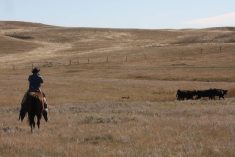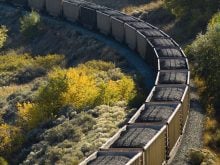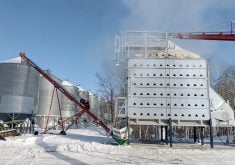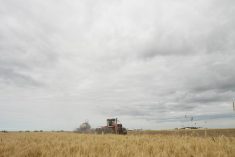Most farmers are doing everything they can to avoid soil compaction, trying to glide across their fields like fleet-of-foot velociraptors.
But down in the subsoil, it feels as if farmers’ grain carts and other heavy equipment are stomping down like brontosauruses.
It’s a problem most farmers don’t know about.
“It’s the deeper soil, the subsoil compaction, that’s problematic,” said Marla Riekman, a Manitoba Agriculture soil management expert, about the impact of heavy equipment on prairie soils.
“We float (heavy equipment loads) out over a larger area (with wide and soft tires) and decrease the surface area, but we’re not really decreasing the deep compaction impact if we’re keeping high axle load and heavy equipment on the field.”
Read Also
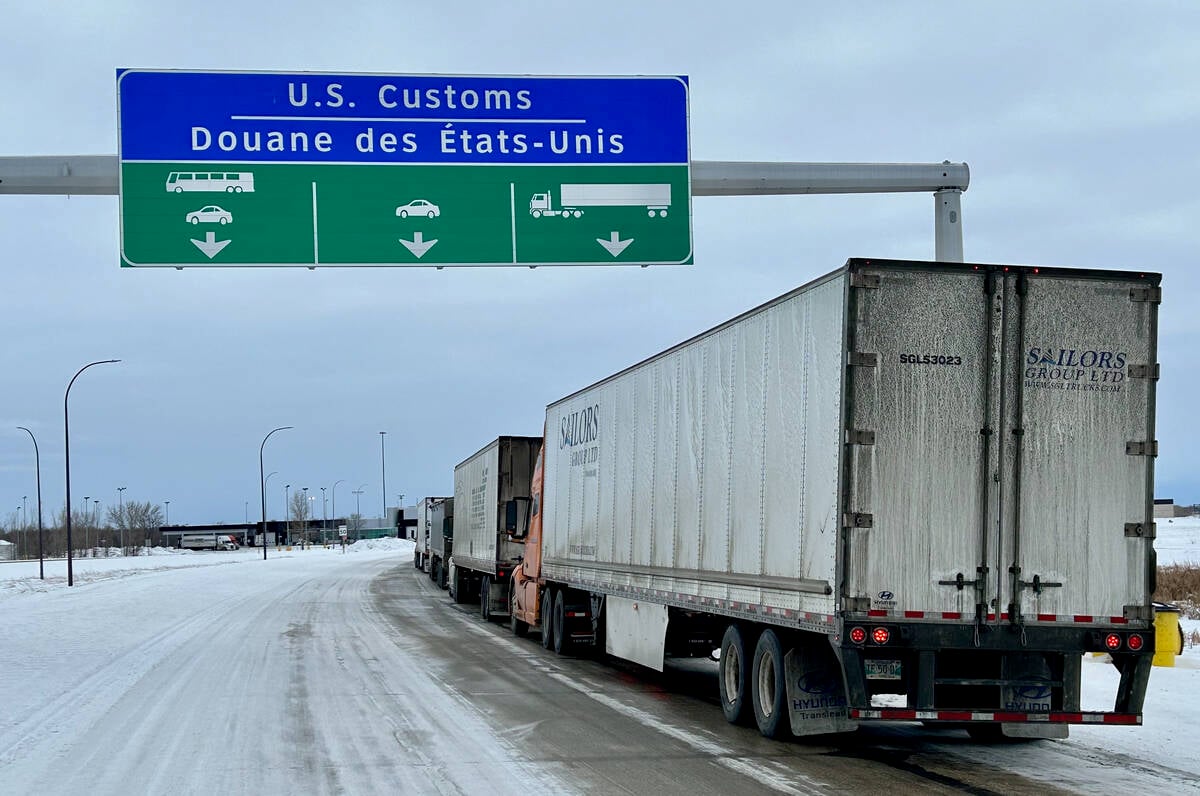
U.S. bill could keep out Canadian truckers
The Protecting America’s Roads Act, which was tabled in the U.S. House of Representatives at the beginning of October, would “rid the country of illegal immigrant commercial truck drivers and ineligible foreign nationals.”
Riekman was considering the situation for Manitoba and prairie fields in light of a paper published by European researchers Thomas Keller and Dani Or concluding that heavy equipment is reducing farmland’s yield potential due to subsoil compaction.
Western Canadian farming is significantly different from much European and United States midwestern farming due to more intense freezing and thawing cycles and the dominance of no-till agriculture. The freeze-thaw cycles crack soils and on no-till fields, near-surface soil compaction is minimized when combined with low pounds-per-square-inch tires.
However, that does little to alleviate the weight down in the subsoil.
“The axle load actually takes that tire pressure and drives the pressure that that tire is exerting deeper and deeper into the ground,” said Riekman.
“Depending on the axle load, that can be pushing it two or three feet down.”
Keller and Or argue that subsoil compaction is damaging agricultural productivity in some of the world’s most bountiful regions, comprising those areas with mechanized agriculture, tilled soils and moist conditions. Much of Europe and the central U.S. falls into that category.
Soil compaction is generally less likely in arid conditions, which characterize the western Prairies. However, seeding or harvest operations that put heavy equipment onto fields when they are wet increase the risk of compaction.
The wettest soils aren’t at greatest risk, since saturation can often allow empty pockets to survive, but damp soils can be wet enough to crush out these pores if enough weight is applied.
“We don’t really know what the overall impact to yield ends up being,” said Riekman.
“We don’t really know too much about what the long-term impact is on a field scale, especially in Western Canada, but we know that freeze-thaw is not going to break up compaction to depth because we don’t freeze deep enough.”
Some European research has shown that a single heavy pass can cause enough subsoil compaction to cause significant yield loss for years.
In Western Canada, grain carts have drawn particular attention as potential compaction culprits. They can carry enormous weights that lead to heavy axle loads.
Riekman said farmers should consider filling grain carts only part way before getting the grain off the field and bringing the carts onto and off the field following the same tire path taken by the combine.
That’s because a general rule among soil compaction experts is that about 80 percent of compaction comes from the first pass of heavy equipment.
“That one pass has a big impact on the soil below,” said Riekman.
Minimizing equipment access and the driving routes in fields can greatly reduce compaction impacts.
Ironically, one reason grain carts were introduced was to reduce the compaction risk being imposed by skinny grain truck tires. While that surface level threat has been minimized with grain carts, the subsoil is still getting squeezed by heavy loads.
Keller and Or think dinosaur feet also brought grave soil challenges. The giant plant eaters like brachiosauruses and brontosauruses weighed dozens of tonnes but spread out their surface impact by having wide feet, like camels or muskox.
However, their subsoil impact would have brought the same problems as heavy farm equipment, causing Keller and Or to posit that the saurians might have employed strategies like set foraging trails so that they only compacted limited amounts of the environment upon which they relied.







